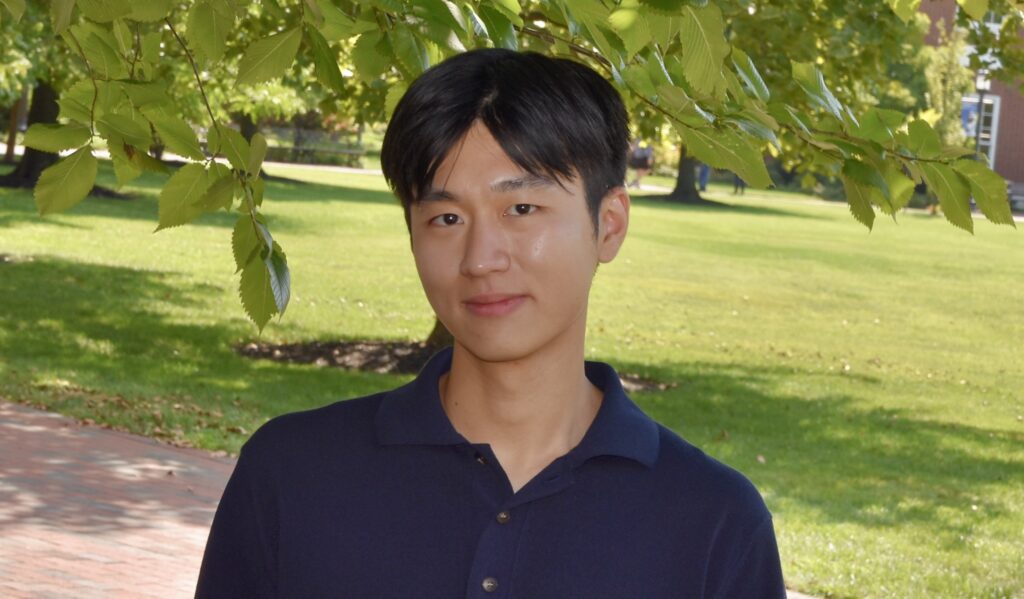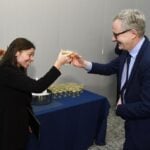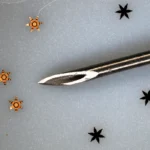Heonjoon Lee looking to develop biosensors using molecular circuits

When Heonjoon Lee was a first-year chemical engineering undergraduate student at Sungkyunkwan University in South Korea, he attended a seminar on synthetic biology. He was fascinated to learn how DNA and RNA could be used to design reaction cascades and biochemical circuits. This inspired him to pursue a PhD at Johns Hopkins University in biotechnology, but he was unsure exactly what he wanted to focus on. That is until he learned about Rebecca Schulman’s lab and their work on using DNA to swell hydrogels and actuate soft robots.
Now a fifth year PhD student, Lee and Schulman, core researcher at the Institute for NanoBioTechnology and associate professor of chemical and biomolecular engineering, are designing biosensors using molecular circuits. He enjoys the opportunity the project brings for engineers like himself to collaborate with physicians and medical researchers to develop a technology that have real-world applications, especially in the clinic or biomedical fields.
What topics are you researching?
I’m researching the design of biosensors using DNA and RNA-based molecular circuits. Our lab developed a platform called ARTIST, which stands for Aptamer-Regulated Transcription for In vitro Sensing and Transduction. The platform constructs molecular biosensors that targets a range of ligands with sensitivity tunable across multiple orders of magnitude. A common challenge with sensors is measuring concentrations of target ligands within concentrations that are meaningful (e.g. measuring upregulated concentrations of biomarkers in a disease). Current methods require rigorous steps, instrumentation, and facilities to accurately measure targets under such low concentrations. Our goal is to build an all-in-one sensor platform in which we can amplify the sensor to measure proteins under physiologically relevant concentrations.
What are the challenges to studying biosensor design using ligands?
There are many ways a ligand, such as a protein or a small molecule of interest, binds to a receptor. However, processing the binding response, amplifying the signal, and measuring it is a major challenge. Moreover, designing biosensors not just for one ligand, but for multiple targets, can be very difficult. Hence a modular platform that can rapidly design biosensors that detect a wide range of target ligands is needed.
What are the applications for ARTIST?
We are exploring different applications for ARTIST. It could be useful in portable diagnostics because, in theory, the components of our biosensor (like the DNA templates, the reaction enzyme, buffer) can be freeze-dried for storage, and are compatible with existing portable systems that measure fluorescence. It can also be used in biomanufacturing to track the production of therapeutic proteins or monitor the activity of cells in response to therapeutics. Our lab is also investigating if we can anchor the biosensors in materials like hydrogels, onto which we can attach cells and measure secretion proteins, metabolites, and small molecules in real-time.
What unexpected surprises did you encounter in your research?
The challenges of measuring the concentration of molecules accurately, easily, and rapidly was surprising to me. I thought assay designs such as the COVID test kit were obvious and simple. Now that I am in the biosensing field and learning how these assays work, I’ve realized how brilliantly they have been designed.
When you are not doing research, what do you do for fun?
I enjoy bouldering, running, and hiking. I used to be part of the Korean Graduate Students Association and helped organize all sorts of social events. It was fun, and I got to meet new friends! Eventually, I would like to travel to places in South America, or East Asia in the future. I’ve never traveled to any countries around those regions, so would be something to look forward to!





